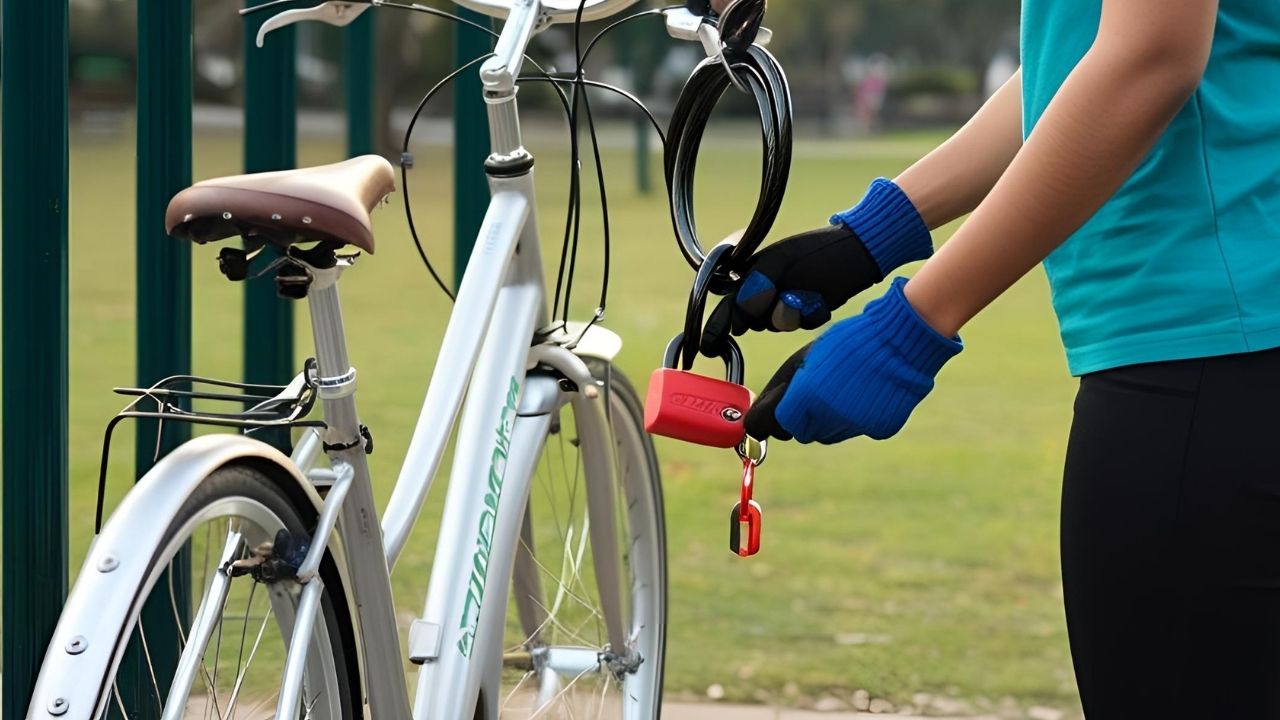How Easy Is It to Pick a Bike Lock? (And What You Can Do About It)
If you’ve ever parked your bike in a public place — whether it’s outside a café, office, or train station — you’ve probably had that nagging thought:
“Is my bike lock really secure? Or could someone just pick it and ride off in seconds?”
You're not alone. Bike theft is a growing problem in cities around the world, and for many cyclists, the thought of losing a bike — not just the money but the freedom it represents — is deeply unsettling. Whether you commute daily, ride for fun, or use your bike to stay fit, protecting it matters.
Here’s the thing: not all bike locks offer the same level of protection. Some locks can be picked in under a minute. Others are built to stand strong against picking, cutting, drilling, and brute force attacks. So, how do you know which lock is up to the task?
In this article, we’ll walk you through:
● How easy it really is to pick a bike lock (based on type and design)
● Which locks are most vulnerable to picking or tampering
● The specific features that make a lock truly secure
● Practical tips to help you keep your bike safe — even in high-risk areas
You don’t need to be a locksmith or a security expert to understand this. We’re keeping things simple, practical, and straight to the point — because when it comes to protecting your bike, knowledge is your best defense.
Let’s break it down and help you make a smarter, safer choice.
Can a Bike Lock Be Picked?
Yes — many cheap or poorly designed locks can be picked.
Just like house or car locks, bike locks can be picked using specialized tools, and some can even be bypassed without tools at all. You may be shocked to find that some cable locks can be cut or picked in under 10 seconds.
But there’s a silver lining: Not all locks are that vulnerable.
Which Bike Locks Are Easiest to Pick?
Here’s a quick overview of common lock types and how vulnerable they are to picking:
|
Lock Type |
Pick Resistance |
Notes |
|
Cable Locks |
Very Low |
Easily picked or cut with bolt cutters. Not recommended. |
|
Chain Locks |
Varies |
Depends on the chain and lock quality. Cheap ones are easy targets. |
|
U-Locks (D-Locks) |
High (Good ones) |
Quality U-locks are very hard to pick and resist brute force. |
|
Folding Locks |
Medium |
Some folding locks are secure, others less so. Varies by brand. |
Many locks use basic pin-tumbler mechanisms, which can be picked by experienced thieves. But premium U-locks with disc-detainer or double-bolt locking mechanisms are significantly harder to tamper with.
Real Talk: How Easy Is It Really?
Let’s not sugarcoat things — if a thief is experienced and determined, they might still find a way. But there’s one rule every pro cyclist lives by:
The goal is to make your bike harder to steal than the one next to it.
A cheap lock can be picked or broken easily. A high-security lock? That’s going to take tools, time, and noise — all things a thief wants to avoid.
What Makes a Lock “Hard to Pick”?
Look for these features when choosing a lock that resists picking:
● Disc-detainer locking mechanisms
● Double-bolt deadlocks
● Anti-drill plates and hardened steel shackles
● Shrouded or shielded keyways
● Sold Secure Gold or Diamond rating
At Via Velo, we design our locks with exactly these features in mind — because if it’s not secure, it’s not worth it.
Tips to Keep Your Bike Safe
Security doesn’t stop at buying a good lock. Here’s how to level up your protection:
● Lock your bike in well-lit, busy areas
● Secure both the frame and wheels
● Avoid overnight outdoor parking
● Use two locks — a U-lock and a cable or chain for wheels
● Register your bike and keep photos/serial numbers
Final Thoughts: Don’t Make It Easy for Bike Thieves
The reality is simple: if your bike lock is easy to pick, your bike is easy to steal.
Far too many cyclists rely on cheap cable locks or generic options, assuming all locks offer similar protection — but that assumption can cost you your ride.
As we've covered, not all bike locks are equal. High-security locks with advanced features like disc-detainer cores, double-bolt mechanisms, and hardened steel construction make a real difference. Thieves want quick, quiet jobs — and the right lock can stop them in their tracks.
At the end of the day, your bike is more than just a mode of transport. It’s part of your lifestyle — and it deserves serious protection.
If you’re ready to upgrade your security and gain peace of mind, explore our range of battle-tested bike locks at Via Velo Lock. Built to resist picking, cutting, and prying, they’re designed to keep your ride exactly where you left it.
Stay smart. Lock strong. Ride free.
FAQs
Q1. Are U-locks safer than cable locks?
Yes, U-locks are much harder to cut or pick compared to basic cable locks.
Q2. Can a folding lock be picked?
Some can — it depends on the locking mechanism. Always choose reputable brands with high-security ratings.
Q3. How do I know if a lock is pick-resistant?
Look for security certifications like “Sold Secure Gold” or “Diamond” and technical features like disc detainers.
Q4. Is it worth using two locks?
Absolutely. Thieves may be able to defeat one lock, but rarely both.
Q5. What’s the most secure bike lock available?
High-end U-locks with hardened steel, anti-drill, and anti-pick features are currently the gold standard.


Share:
Where to Put U-Lock on the Bike While Riding
U-Locks vs. Cable Locks — Which One Really Keeps Your Bike Safe?